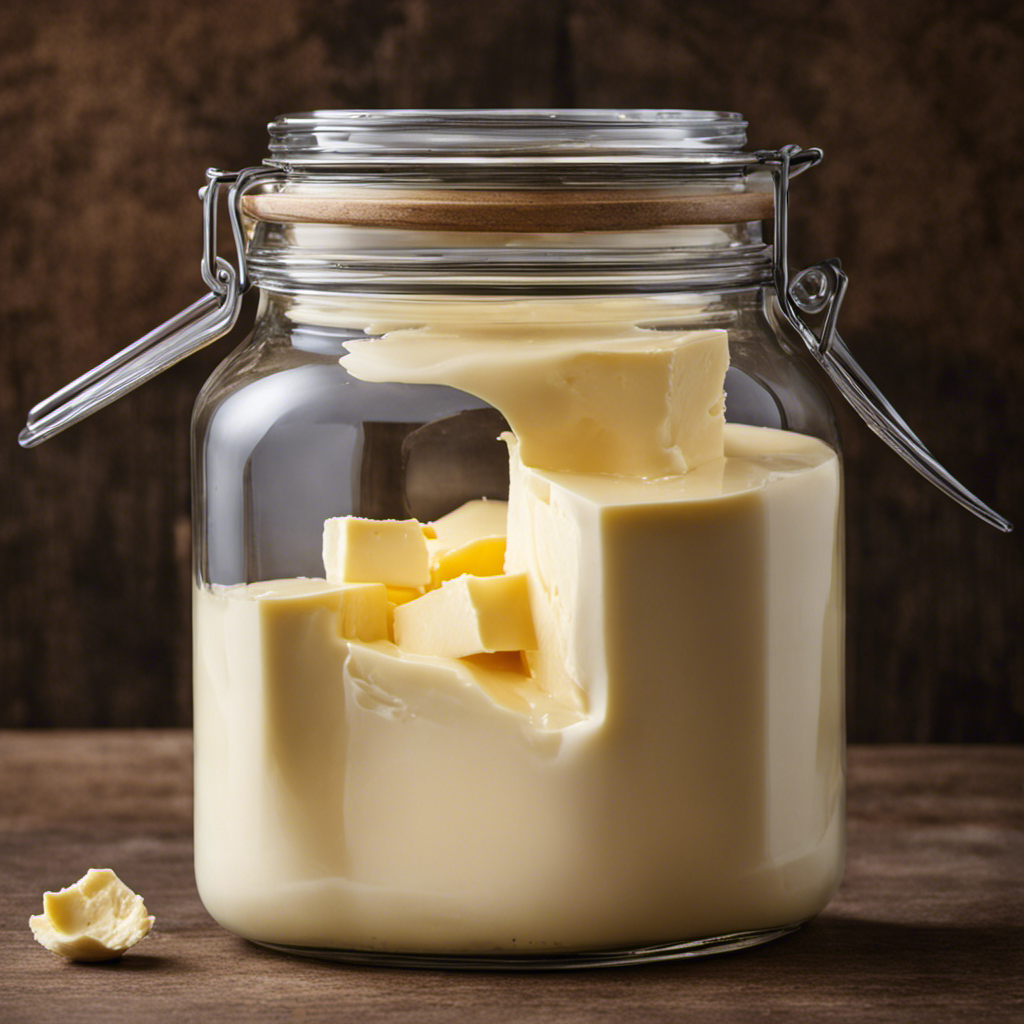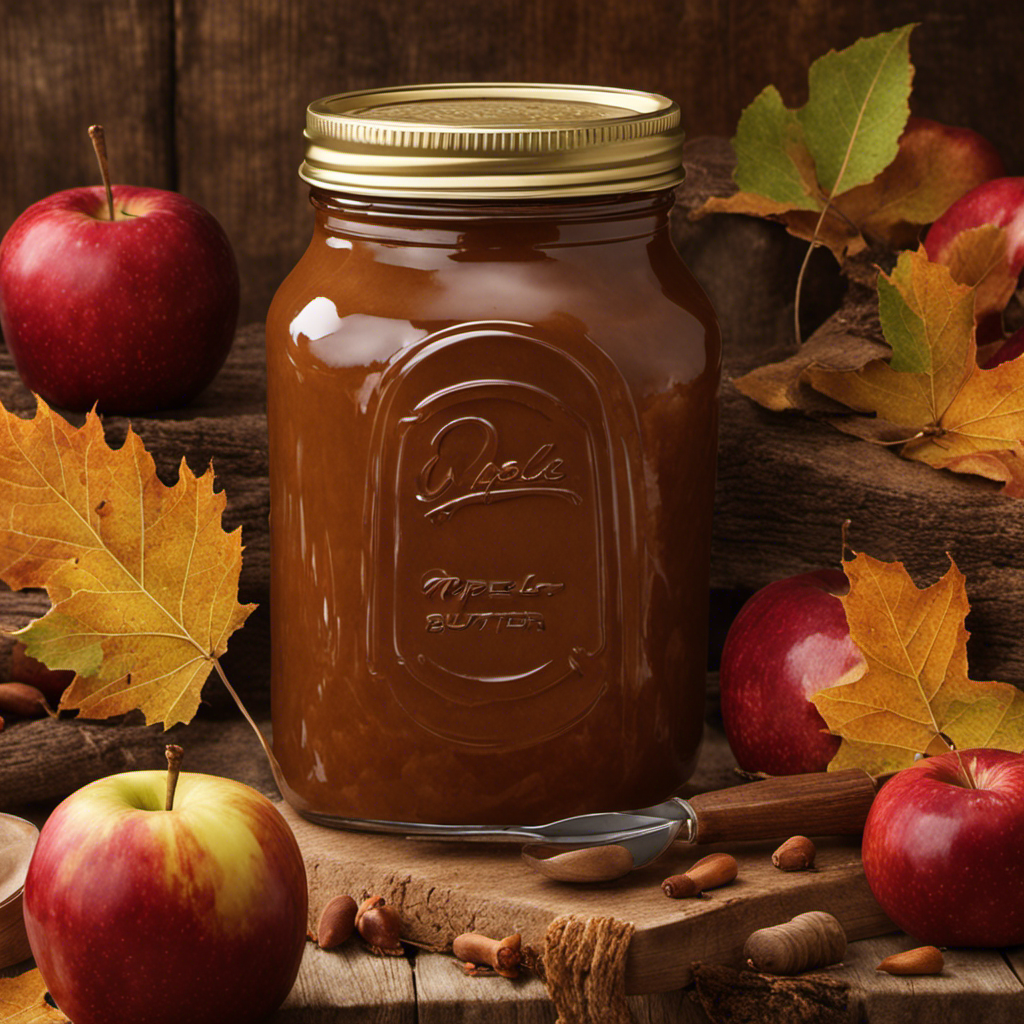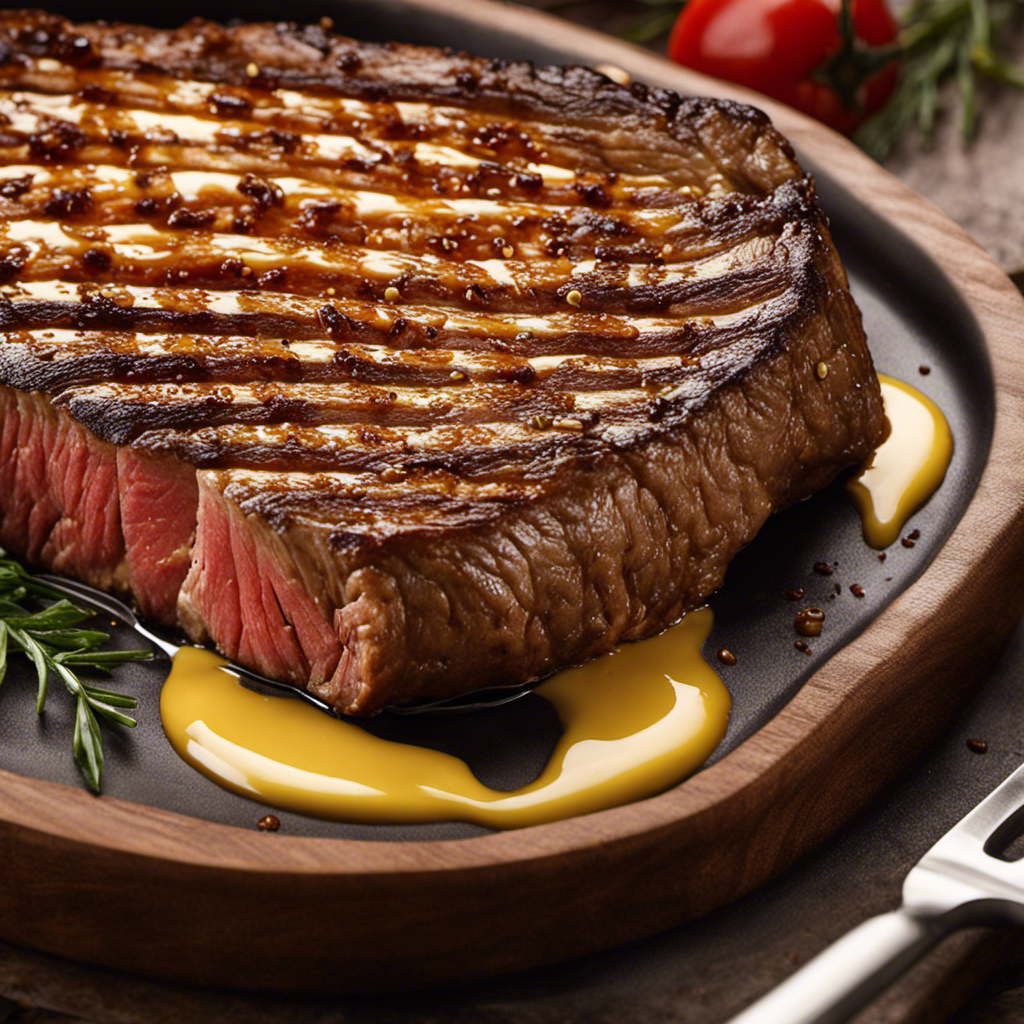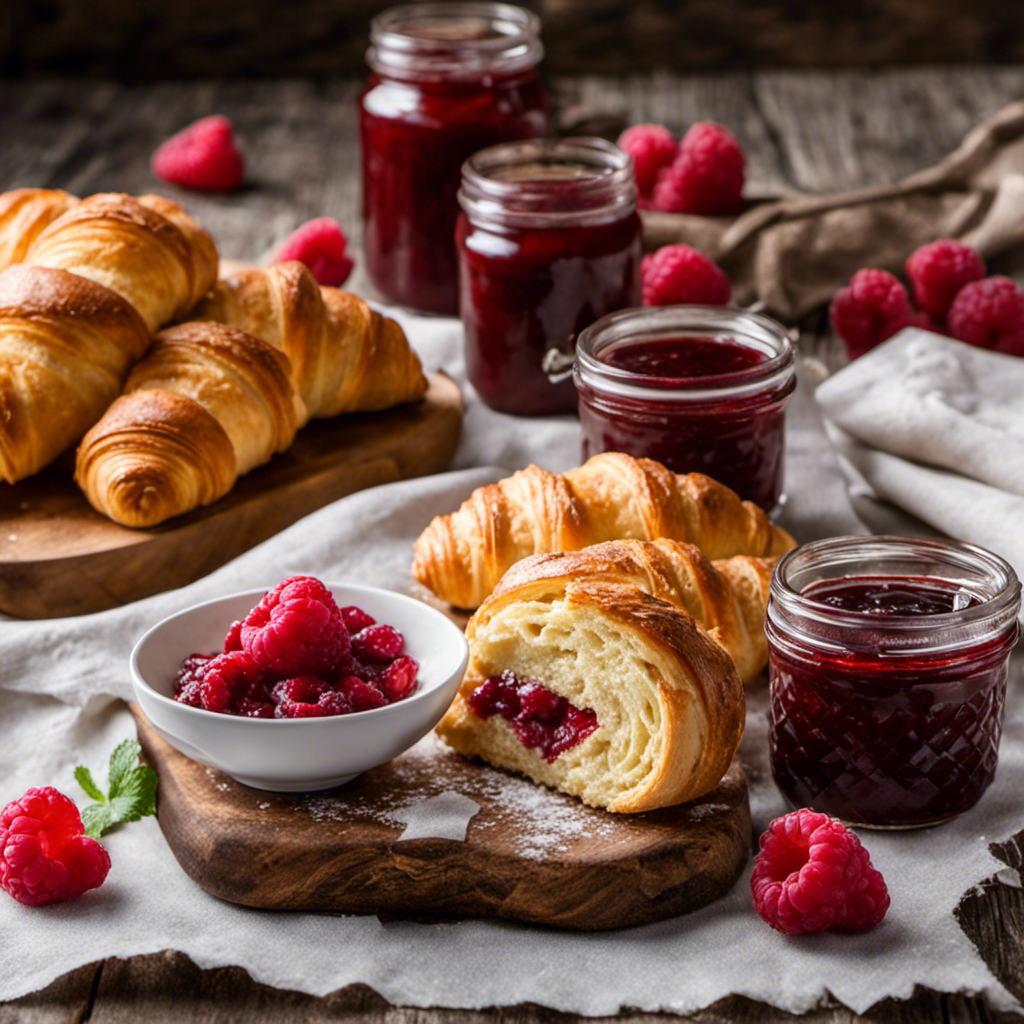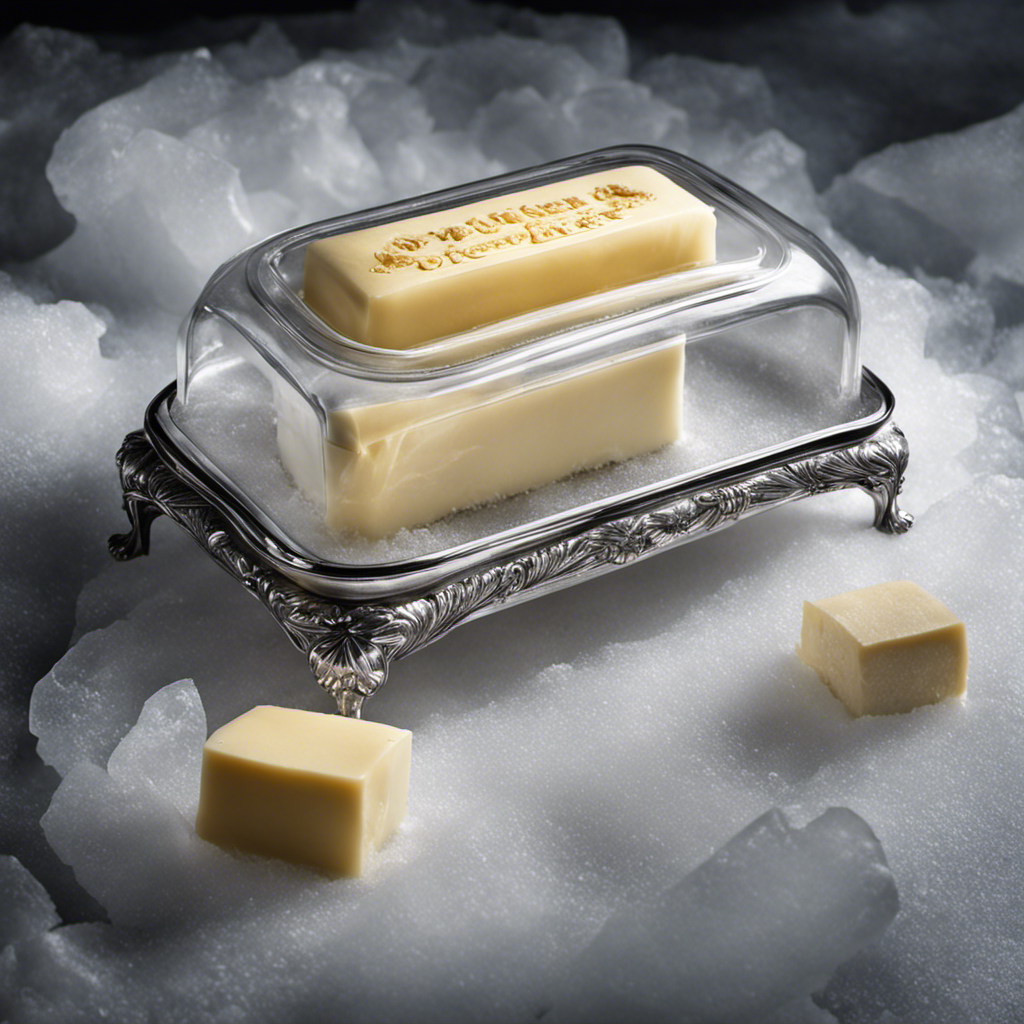I have always wondered about the cost of a butter croissant at Starbucks. Surprisingly, the answer may surprise you.
According to my research, the average price of a butter croissant at Starbucks is around $3.50. However, this price can vary depending on factors such as location, size, and any special offers or deals available.
In this article, we’ll delve into the details of Starbucks’ butter croissant pricing and explore ways to save money on this delightful pastry. So, let’s dive in and uncover the secrets behind the cost of a butter croissant at Starbucks.
Key Takeaways
- The cost of a butter croissant at Starbucks is influenced by factors such as the location of the store, the cost of ingredients, labor costs, overhead expenses, and any special offers or deals.
- Understanding the cost of a butter croissant at Starbucks involves considering pricing options, the cost of ingredients, labor and production costs, the location of the store, and Starbucks’ brand reputation and overall experience.
- Pricing factors for Starbucks’ butter croissant include the quality of ingredients, the location of the store, competition in the local market, any specialty additions or fillings, and the production process (hand-rolling vs. machine-made).
- The ingredients used in the butter croissant impact its pricing, with factors such as the quality of butter, additions and fillings, production process, and taste and texture of the croissant being taken into account. Additionally, customer choices and preferences play a role in determining the price.
Starbucks’ Butter Croissant Prices
Starbucks’ butter croissant prices vary depending on the location. Understanding the pricing of Starbucks’ butter croissants involves considering various factors that affect their cost.
One significant factor is the cost of ingredients. Starbucks uses high-quality ingredients in their pastries, including butter, flour, and other baking essentials. The cost of these ingredients can vary depending on the region and availability.
Additionally, labor costs play a role in pricing. Skilled bakers are responsible for crafting each butter croissant, and their wages contribute to the overall cost.
Furthermore, overhead expenses such as rent, utilities, and marketing efforts also impact pricing. By considering these factors, Starbucks determines the price of their butter croissants at each location.
Now, let’s delve deeper into understanding the cost of a butter croissant at Starbucks.
Understanding the Cost of a Butter Croissant at Starbucks
To understand the cost of a butter croissant, you’ll want to take a look at the pricing options available.
Various factors influence the pricing of a butter croissant at Starbucks. One of the key pricing factors is the cost of ingredients. High-quality butter, flour, and other ingredients contribute to the overall cost of the croissant. Additionally, the labor and production costs involved in making the croissant also play a role in determining its price.
Another factor to consider is the location of the Starbucks store. Prices may vary depending on the region and local market conditions.
It is also important to note that Starbucks prices may be higher compared to other bakeries or cafes due to the brand’s reputation and the overall experience it offers.
When comparing the cost of a butter croissant at Starbucks with other establishments, it is essential to consider these pricing factors and the overall value provided.
Pricing Factors for Starbucks’ Butter Croissant
When it comes to understanding the pricing of a butter croissant at Starbucks, there are several key factors to consider.
Firstly, the ingredients used in the croissant play a significant role in determining its price. Higher-quality ingredients or specialty additions, such as organic butter or gourmet fillings, can drive up the cost.
Secondly, the location of the Starbucks store also affects the price of the butter croissant. In areas with a higher cost of living or where real estate prices are steep, the price of food items tends to be higher to offset these expenses.
Lastly, competition in the local market influences the cost of the butter croissant. If there are several other bakeries or coffee shops in the vicinity offering similar pastries, Starbucks may adjust its pricing to remain competitive and attract customers.
Ingredients Impact Pricing
The price of a butter croissant can be influenced by the ingredients used. At Starbucks, the ingredients in their butter croissant play a crucial role in determining its price. Here is a breakdown of how different ingredients impact the pricing:
-
Quality of Butter: The type and quality of butter used can significantly affect the taste and texture of the croissant. Higher quality butter, such as European-style butter, tends to be more expensive, thus increasing the overall cost of the croissant.
-
Additions and Fillings: Some butter croissants may have additional ingredients like chocolate, almonds, or fruit fillings. These additions not only enhance the flavor but also require extra labor and ingredients, which can increase the price.
-
Production Process: The method used to prepare the croissant, such as hand-rolling or machine-made, can also impact the price. Handmade croissants often require more time and expertise, making them pricier.
Understanding the impact of these ingredients can help customers make informed choices when selecting a butter croissant from Starbucks.
Location Affects Price
The price of a butter croissant can vary depending on the location it is purchased from. This is because the cost of ingredients sourcing and the impact of the local economy play a significant role in determining the final price.
When it comes to sourcing ingredients, some locations may opt for locally sourced butter, flour, and other ingredients, which can be more expensive than importing them. Additionally, the local economy can have an impact on the cost of labor, rent, and other operational expenses, which can further influence the price of the croissant. For example, in areas with a high cost of living, the price of the croissant may be higher to compensate for these expenses.
Overall, the location of purchase can greatly affect the price of a butter croissant.
Competition Influences Cost
Competition plays a significant role in influencing the cost of butter croissants at Starbucks. As with any business, Starbucks must consider the market pricing trends and adjust their prices accordingly to remain competitive.
Here are a couple of ways in which competition impacts the cost of butter croissants:
-
Competitive Pricing Strategies:
-
Starbucks closely monitors the prices of similar products offered by their competitors, such as other coffee shops or bakeries.
-
They may adjust their prices to ensure they are competitive while still maintaining profitability.
-
Product Differentiation:
-
To stand out from the competition, Starbucks may invest in high-quality ingredients or unique flavors for their butter croissants.
-
These enhancements may result in slightly higher prices compared to competitors.
Considering these factors, it is clear that competition’s impact on market pricing trends greatly influences the cost of butter croissants at Starbucks.
In the following section, we will explore the size options and pricing for these delectable treats.
Size Options and Pricing for Butter Croissants at Starbucks
You can find out the size options and pricing for butter croissants at Starbucks. When it comes to pricing factors, Starbucks takes into consideration the ingredients used, the cost of production, and market demand. They offer two size options for their butter croissants: regular and mini. The regular size is perfect for a satisfying breakfast or snack, while the mini size is great for a lighter option or for sharing. Here is a table showcasing the size options and pricing for butter croissants at Starbucks:
| Size | Price |
|---|---|
| Regular | $2.95 |
| Mini | $1.95 |
As you can see, the regular size is slightly more expensive than the mini size, reflecting the difference in portion size. Now let’s compare the cost of butter croissants at Starbucks to other bakeries, to see how they stack up in terms of affordability and value.
Comparing the Cost of Butter Croissants at Starbucks to Other Bakeries
When it comes to butter croissants, Starbucks is just one player in a highly competitive market. In order to compare the cost of their croissants to other bakeries, it’s important to consider price variations across the board.
Additionally, quality is another factor to take into account, as the taste and texture of a croissant can vary widely from one bakery to another.
Starbucks Vs Competitors
If you’re comparing Starbucks to its competitors, the price of a butter croissant may vary.
When it comes to comparing Starbucks to local cafes, there are a few key differences to consider.
Firstly, Starbucks is a global brand with a strong marketing presence, while local cafes often rely on word-of-mouth and community engagement.
Secondly, Starbucks has a wide range of menu options and consistent quality across locations, whereas local cafes may have a more limited menu and varying quality.
In terms of pricing, Starbucks tends to have higher prices due to their brand recognition and premium experience. However, local cafes may offer more affordable options and a unique, personalized atmosphere.
Ultimately, the decision between Starbucks and local cafes depends on individual preferences and priorities.
Price Variations Across Bakeries
When comparing prices across different bakeries, it’s important to consider the variations in menu options and quality. Price comparison is a crucial factor for customers when deciding where to purchase their favorite baked goods. However, it’s equally important to understand that customer preferences play a significant role in this decision-making process.
Different bakeries offer a range of menu options, from basic croissants to specialty pastries. The price variations across these options can be significant, depending on the ingredients used and the level of craftsmanship involved. Additionally, customer preferences also come into play.
Some customers prioritize affordability and are willing to compromise on quality, while others seek out premium bakeries that offer high-quality products at a higher price point.
Quality of Croissants
To get the best quality croissants, you should look for bakeries that use high-quality ingredients and pay attention to the level of craftsmanship in their baking process. Here are some factors to consider when seeking out top-notch croissants:
-
Ingredients:
-
High-quality butter: Look for bakeries that use European-style butter, known for its rich, creamy flavor.
-
Flour: Opt for bakeries that use unbleached, high-protein flour for a tender and flaky texture.
-
Craftsmanship:
-
Lamination technique: A good croissant requires careful layering of dough and butter to create those signature airy layers.
-
Baking method: Traditional croissants are baked at high temperatures to achieve a golden crust and light interior.
Understanding croissant flavors is also essential. From classic plain croissants to chocolate-filled or almond-flavored variations, each offers a unique taste experience. When it comes to accompaniments, some popular choices include jams, honey, or even a slice of cheese to complement the buttery richness of the croissant.
Special Offers and Deals on Butter Croissants at Starbucks
You can find special offers and deals on butter croissants at Starbucks.
As a frequent visitor of Starbucks, I have come to appreciate the special promotions they offer on their delicious butter croissants.
These promotions are a part of Starbucks’ loyalty rewards program, which aims to provide added value to loyal customers.
Through this program, customers can earn stars for every purchase, and these stars can be redeemed for various rewards, including discounted or even free butter croissants.
Starbucks often runs limited-time promotions, such as buy one get one free or discounts on specific days of the week.
These special offers and deals make enjoying a butter croissant at Starbucks even more enticing and affordable.
Seasonal Pricing for Butter Croissants at Starbucks
Don’t miss out on the seasonal pricing for those flaky pastries at Starbucks. As a frequent customer, I’ve always been intrigued by the seasonal promotions offered by Starbucks. The butter croissant, in particular, is one item that catches my attention. Here’s what I’ve discovered about the seasonal pricing and customer preferences:
-
Seasonal Pricing:
During certain times of the year, Starbucks offers special pricing on their butter croissants. These promotions often coincide with holidays or specific seasons, enticing customers to indulge in this delectable treat. -
Customer Preferences:
Many customers eagerly await these seasonal promotions, as they provide an opportunity to enjoy their favorite butter croissants at a discounted price. The limited-time nature of these promotions adds an element of excitement and exclusivity, attracting customers to try or revisit this menu item.
Overall, Starbucks’ seasonal pricing on butter croissants appeals to customer preferences by offering a chance to enjoy these delicious pastries at a more affordable price.
Tips for Saving Money on Butter Croissants at Starbucks
When craving a flaky pastry, try exploring alternative cafes for budget-friendly options. Saving money on butter croissants at Starbucks is possible if you’re willing to look elsewhere.
Many local bakeries and cafes offer delicious butter croissants at more affordable prices. These alternative options not only provide a cost-effective solution, but they also often prioritize quality and flavor. By venturing beyond the Starbucks counter, you can discover hidden gems that offer a wide range of pastries, including butter croissants, at lower prices.
Additionally, consider buying in bulk or during sales to save even more money. Keeping an eye out for promotions and discounts can help you indulge in your butter croissant craving without breaking the bank.
Frequently Asked Questions
Are There Any Gluten-Free Options for Butter Croissants at Starbucks?
There are gluten-free options for butter croissants at Starbucks. However, the pricing comparison may vary depending on location. It is best to check with your local Starbucks for specific pricing and availability.
Can I Customize My Butter Croissant With Additional Fillings or Toppings at Starbucks?
I can customize my butter croissant at Starbucks with additional fillings or toppings. It’s great to have so many customization options! As for the price, I’ll compare it to other options.
Are There Any Vegan or Dairy-Free Alternatives for Butter Croissants at Starbucks?
There are vegan alternatives and dairy-free options available for butter croissants at Starbucks. These options cater to individuals with dietary restrictions or preferences, ensuring that everyone can enjoy a delicious pastry.
Do Starbucks Offer Any Loyalty Programs or Rewards for Purchasing Butter Croissants?
Starbucks offers a loyalty program called Starbucks Rewards, which allows customers to earn points for their purchases, including butter croissants. The pricing options for butter croissants may vary depending on the location.
Are There Any Limited Edition or Specialty Flavors of Butter Croissants Available at Starbucks?
Limited edition flavors of butter croissants and specialty fillings are not mentioned in relation to Starbucks. However, Starbucks does offer a variety of other pastries, including plain and almond croissants.
Conclusion
After thoroughly researching the pricing of butter croissants at Starbucks, it is clear that the cost can vary depending on factors such as size, location, and promotions. However, one thing is certain – indulging in a butter croissant from Starbucks is like taking a bite out of a cloud.
Its flaky layers and rich buttery taste are sure to transport you to pastry paradise. While it may not always be the most cost-effective option, treating yourself to this heavenly delight is worth every penny.

